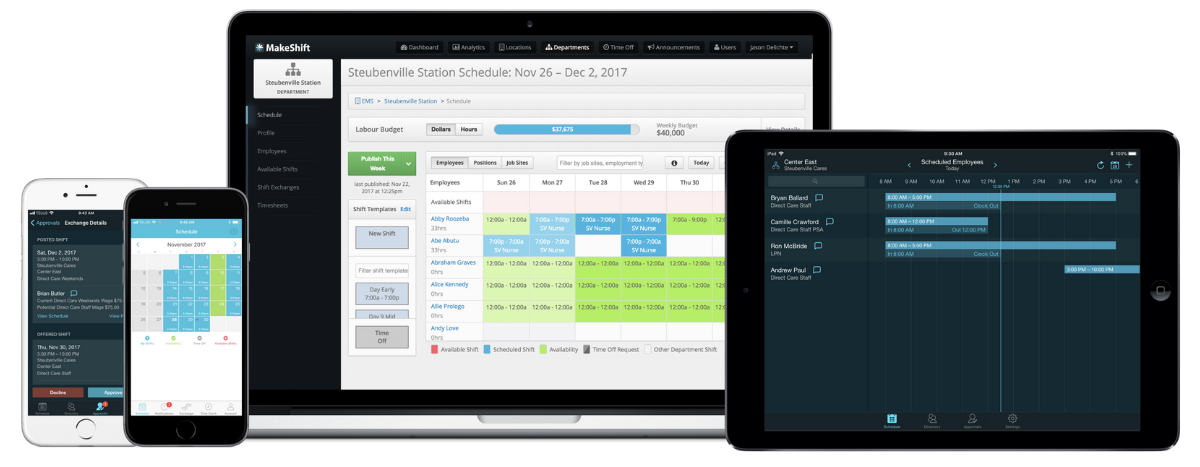In today's fast-paced business landscape, where efficiency reigns supreme and workloads are never-ending, one challenge looms large — understaffing.
From startups to industry giants, organizations grapple with the disheartening effects of insufficient staff numbers.
However, there are innovative ways to tackle this issue head-on.
By implementing strategic measures like optimizing workflows, leveraging tech, and fostering cross-functional collaboration, you can pave the way toward overcoming the burden of understaffing.
And maintain productivity and employee well-being.
In this high-stakes game of juggling resources, finding the delicate balance between success and staffing demands has become a top priority for businesses determined to thrive in today’s economy.
We’re bringing you strategies to handle your understaffed business — we’ll cover:
- Understaffed Business Today
- The Most Profound Impact of Understaffing in Business
- 5 Strategies for Handling an Understaffed Business
- MakeShift lets you do more with less
- FAQ
Understaffed Business Today
We’re all feeling the squeeze of too much work and not enough employees to get the job done these days.
The Great Resignation, aging Boomers, and fallout from the pandemic have left companies scrambling for staff.
When you’re short on hired talent, you may ask team members to do the same amount of work (or more) with fewer people.
And while this can be a short-term solution, it can have significant sweeping consequences, especially if understaffing is chronic.
“It’s bad for everybody. For the customers. It’s bad for the employees. It’s bad for the company,” says Josh Bersin, president, and founder of Bersin & Associates, a talent management research and advisory firm and author of Irresistible: The Seven Secrets of the World’s Most Enduring, Employee-Focused Organizations.
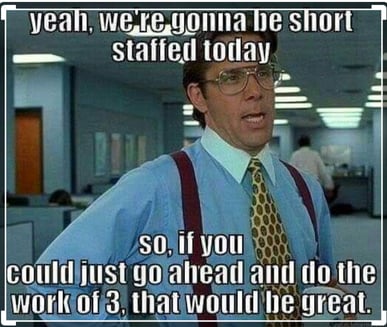
There are obvious consequences of understaffing — let’s talk about the most important one.
The Most Profound Impact of Understaffing in Business
When you think of understaffing impact, your mind may steer toward business operations and profitability.
And yes, that’s a biggie.
However, the impact that packs the hardest punch comes from a different angle.
The people factor.
Many employees today are shouldering the burden of not having enough employees to distribute the workload evenly. They’re taking on more responsibilities, trying to stick it out while their employer gets understaffing handled.
But those people are struggling — they’re overworked and exhausted.
- 83% of millennials have taken on up to 6 extra tasks due to understaffing.
- 70% of professionals feel their employers are not doing enough to prevent or alleviate burnout within their organization.
- 21% of employees say their company doesn’t offer any programs or initiatives to prevent or alleviate burnout.
- Almost ½ of millennials surveyed said they’ve left a job due to burnout.
Employee stress and burnout are at an all-time high
With fewer staff available to divvy up the work, the stress and burnout rate is on the rise — mainly due to:
- Increased workload and responsibilities
- Longer work hours or shifts
- Reduced time for breaks or rest
- Increased pressure to perform or meet deadlines
Burned-out employees are less engaged at work, and it takes a toll on their personal life.
Exhaustion steals precious family time and puts a damper on activities on their days off.
Chronic understaffing is crushing our workforce.
And that’s not the way it’s supposed to be. We want our employees to enjoy their work and feel excited and passionate about their purpose.
You need to take a people-first approach in business. And that means figuring out how to handle the understaffing crisis.
5 Strategies for Handling an Understaffed Business
You want a thriving business? Then take excellent care of your staff and cultivate a company culture prioritizing employee well-being.
Simon Sinek writes in his book, Leaders Eat Last: “Work is no longer a place to dread. It is a place to feel valued.”
Follow these strategies to combat understaffing in your workplace and help your staff feel valued.
1. Communicate with your team
Talk to your team. REALLY talk to them. Use these points as guidelines when working on team communication to get some authenticity going in your company culture.
Get Real — Be open and honest with your team about the staffing situation.
Explain the reasons for understaffing, the impact it’s having on the business and them, and what steps you’re taking to address it.
This builds trust and morale. Your employees will appreciate being kept in the loop.
Be Supportive — Show empathy and support for your team members who are shouldering the burden of understaffing. Acknowledge the increased workload and stress they’re experiencing, and offer support in any way possible.
- Check in on how they’re doing — set aside time to give them your full attention and encourage them to talk.
This boosts morale, reduces burnout, increases engagement, and can entice them to stick around.
Promote collaboration — Encourage team collaboration and problem-solving. Brainstorming solutions can help foster a sense of ownership, empowerment, and community in your employees. They may come up with novel ideas to tackle the issue that you haven’t thought of.
This can improve the overall strategy for addressing understaffing and strengthen team cohesiveness in a single swoop.
According to Gartner, 65% of employees say the pandemic made them rethink the place work should have in their lives — prioritizing work-life balance will go a long way with your employees.
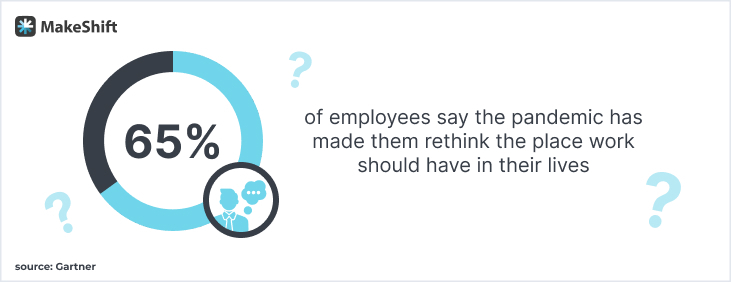
2. Improve recruitment and retention efforts
Don’t settle for the status quo — level up your recruitment and retention efforts by smoothing out processes and offering more perks.
We’ve brainstormed a few ideas below:
Streamline the hiring process — The hiring process can be lengthy and complex, causing delays in filling vacant positions. Streamlining your hiring process will reduce the time it takes to hire new talent, enabling you to quickly fill staffing gaps.
This can be done by:
- Simplifying the application process
- Utilizing technology to automate certain parts of the process
- Communicate clearly and timely with candidates
Offer competitive compensation and benefits — Competitive pay and benefits help attract and retain quality employees. This includes:
- Competitive salaries
- Healthcare
- Retirement plans
- Paid time off
Other incentives like flexible work schedules, remote options, and a positive company culture full of recognition and appreciation will attract top talent.
In a Skynova study, over 36% of surveyed employees valued their flexible schedule over PTO, and almost half said having a flexible schedule trumps their salary.
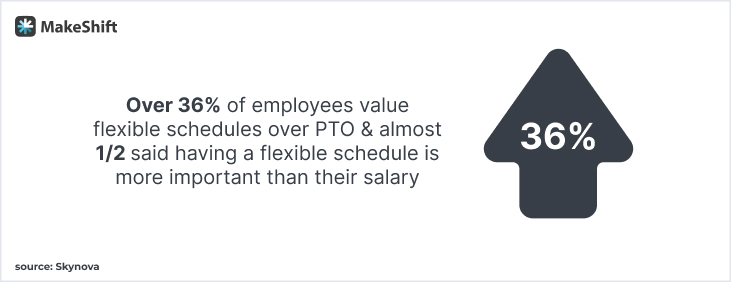
Provide opportunities for professional development — Offering opportunities for professional development motivate and helps retain employees by encouraging growth and deeper purpose in their careers.
This can include:
- Training programs
- Mentorship opportunities
- Access to conferences or industry events
Offering a clear path for advancement within your company can also be a strong motivator for employees to stay with you even when you’re understaffed.
3. Cross-train existing employees
Cross-training employees is a win-win situation. It allows your staff to expand their skills and knowledge.
And you get more employees trained in more roles of your business which helps balance understaffed areas.
Use these points as a starting point for cross-training:
Identify key skills and knowledge areas — Identify the essential skills and knowledge areas needed to perform different roles within your business. This can include both technical and soft skills, such as communication, problem-solving, and leadership.
Develop training programs — Develop training programs to teach employees the skills and knowledge they need to perform different roles within the business. This can include on-the-job training, classroom training, and online courses. Let them know you support them in developing their skills.
Schedule regular training sessions —Schedule regular training sessions to ensure employees are continuously developing their skills and knowledge. This can help create a more flexible and adaptable workforce, enabling employees to proficiently perform multiple roles and tasks as needed.
4. Use technology to increase efficiency
Why wouldn’t you use tech to optimize your workforce? When you need to do more with less, technology is a must.
Try these ideas to let technology help with the understaffing issue in your company.
Automate repetitive tasks — Use technology to automate repetitive tasks like data entry, report generation, and scheduling. This can help free up time for employees to focus on more complex tasks, improving efficiency and productivity.
Using automation can also help reduce employee burnout.
Implement online scheduling and communication tools — Adopt scheduling and communication tools to streamline communication and collaboration between your team. This can include scheduling software, project management software, and video conferencing tools.
Utilize data analytics to optimize staffing levels — Utilize data analytics to optimize staffing levels and ensure that the right number of employees are in the right roles at the right time. This can involve analyzing historical data on customer traffic, employee productivity, and revenue to make informed decisions about staffing levels.
5. Adjust workloads and schedules
Tweaking workloads and schedules is a straightforward way to combat staffing issues. These options below will support your staff’s work-life balance and ensure a more evenly distributed workload.
Prioritize tasks and projects — Prioritize tasks and projects based on their importance and urgency and assign them to the appropriate employees. This can help ensure critical tasks are completed on time, while less critical tasks can be deferred or outsourced.
Evaluate workload distribution — Evaluate workload distribution to ensure that employees are not overloaded with tasks. This can involve re-assigning tasks to different employees or adjusting deadlines to reduce the workload on individual employees.
Offer flexible work arrangements — Offer flexible work arrangements such as remote work, flexible hours, and job-sharing to help employees better manage their workload and achieve work-life balance.
In an Eagle Hill Consulting survey, 52% of workers said burnout is their workplace's top problem. 67% of employees say a workload reduction would alleviate stress.
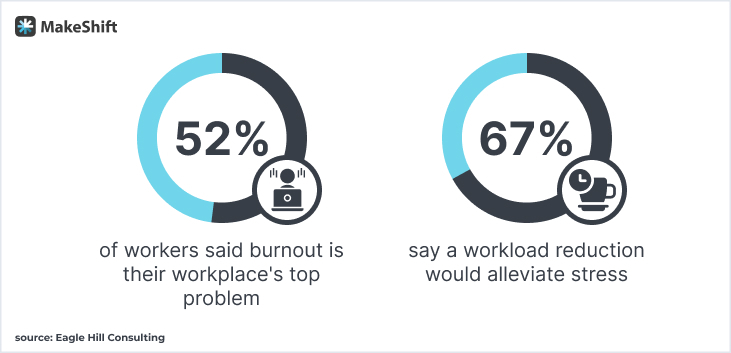
MakeShift Lets You Do More with Less
MakeShift’s people-centric approach makes it easy to manage and create schedules while meshing with your employees’ lives.
Our 5 favorite benefits are:
1. Streamlined scheduling efficiency — Quickly create and modify schedules based on their staffing needs. You’ll be able to better manage your staff levels and allocate resources more effectively.

2. Efficient communication — MakeShift scheduling includes communication features like messaging and alerts, which let you quickly communicate with your team and keep them informed about schedule changes or staffing needs.
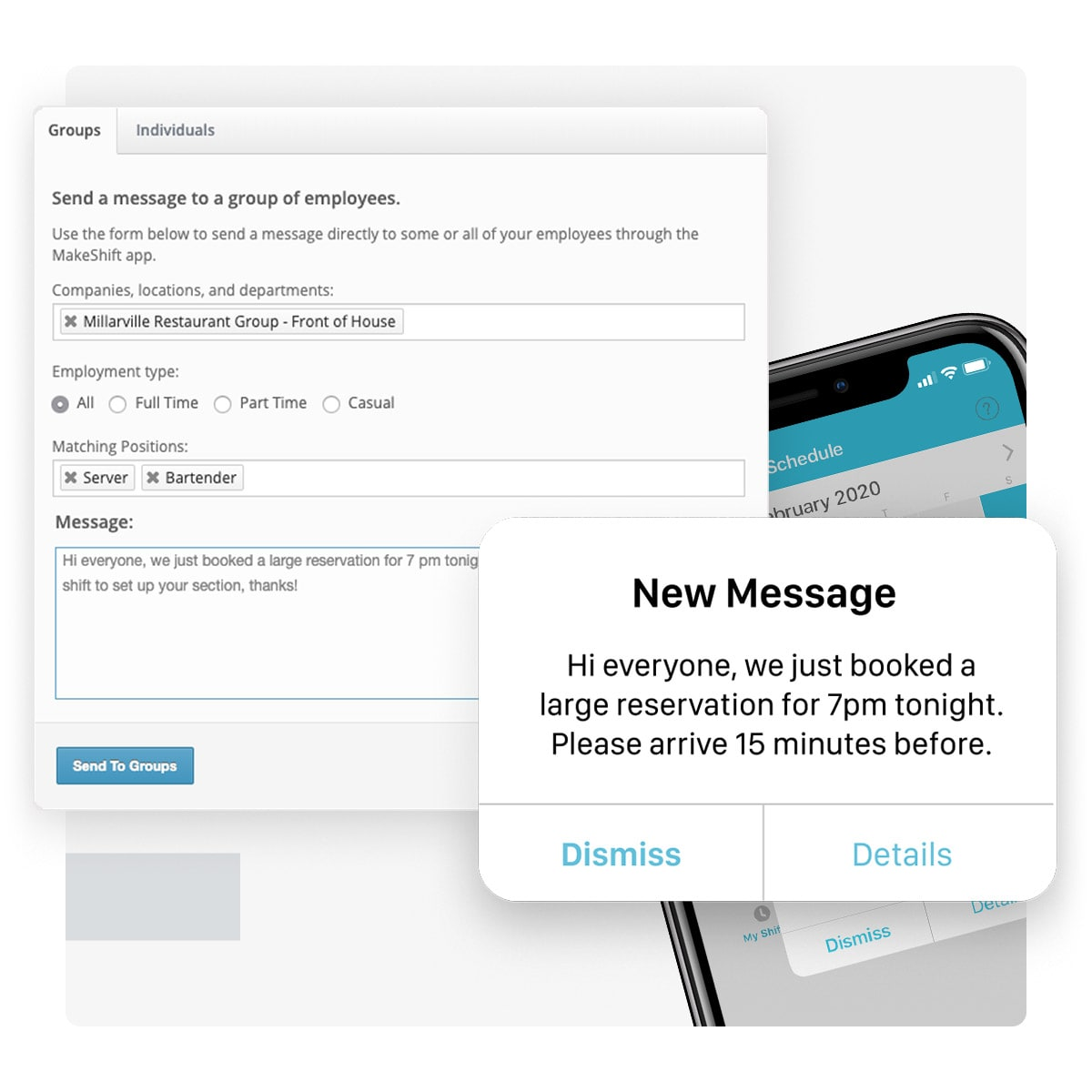
3. Enhanced employee engagement — Employees can view their schedules, request time off, and swap shifts with their colleagues. This can help improve employee engagement, reducing burnout and the revolving door of employees.
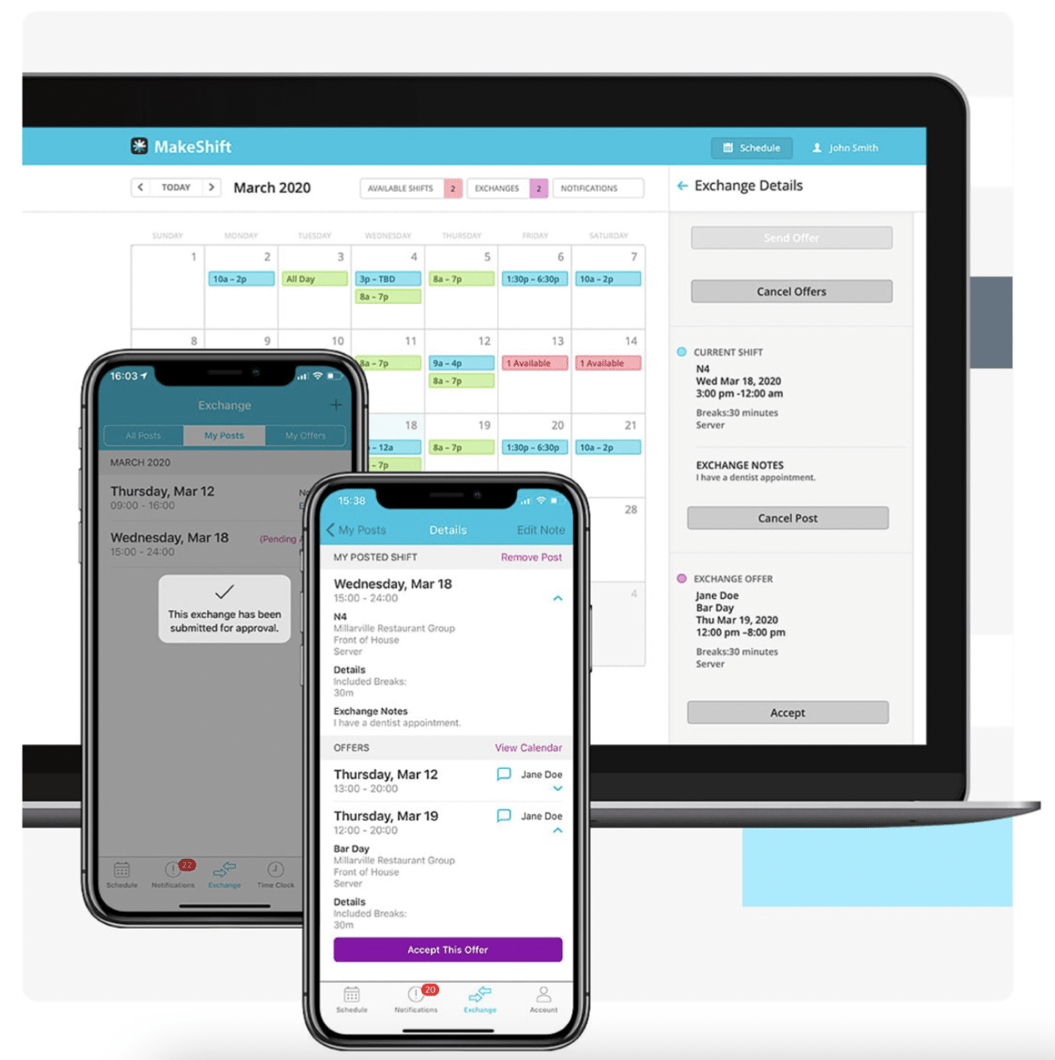
4. Data-driven insights — Reporting features allow you to track employee productivity, attendance, and other metrics. This can help you identify areas for improvement and make informed decisions about staffing levels and scheduling needs.
.png?width=1200&height=1200&name=unnamed%20(1).png)
5. On-the-go accessibility — MakeShift scheduling is accessible from any device with an internet connection, allowing you to manage your workforce from anywhere. Quickly respond to staffing needs and manage your employees more efficiently.
Your employees will LOVE having their schedules in their pockets.

Frequently Asked Questions
What are the effects of understaffing?
Understaffing in business can lead to several adverse effects. It lowers productivity, causes employee burnout and dissatisfaction, leads to customer dissatisfaction, increases errors and mistakes, strains employee relationships and collaboration, and risks missed opportunities for growth.
These consequences highlight the importance of addressing understaffing to maintain a productive and positive work environment.
Why are so many places understaffed right now?
There are several reasons why many places are experiencing a shortage of staff at present.
- The ongoing global pandemic has disrupted labor markets worldwide. Lockdowns, restrictions, and health concerns have led to workforce reductions and hesitancy among individuals to reenter certain industries.
- Shifting priorities and career choices during the pandemic have caused labor imbalances, with some sectors facing increased demand for workers while others struggle to attract talent.
- Demographic factors such as an aging workforce and a smaller pool of available candidates have contributed to the staffing challenges.
- Economic uncertainties, wage disparities, and evolving work preferences also play a role in the shortage.
Is it bad to work somewhere understaffed?
Working in an understaffed environment can have negative implications. It often leads to increased workloads, higher levels of stress, and decreased productivity. Employees may experience burnout, dissatisfaction, and difficulties in maintaining work-life balance.
In addition, understaffing can impact the quality of service or products, strain relationships among team members, and hinder professional development opportunities. Overall, it’s generally not ideal to work in an understaffed setting as it can have detrimental effects on both individuals and the organization as a whole.
What does understaffing mean in business?
Understaffing in business refers to a situation where an organization operates with fewer employees than needed to adequately handle its workload and meet operational demands. It occurs when the available workforce is insufficient to effectively carry out essential tasks and responsibilities. Understaffing can arise due to various factors, such as budget constraints, unexpected departures, difficulty in attracting qualified candidates, or miscalculations in workforce planning.
This shortage of manpower can have detrimental effects on productivity, employee well-being, customer service, and overall business performance.
There Are Solutions for Understaffing
Yep, the staffing shortage is real, and running an understaffed business is not for the weak-hearted.
But there are solutions to help your staff, attract new hires, and allow your business to thrive.
Talk to your team, streamline your process, prioritize projects, and let tech work for you.
At MakeShift, our software and people-first approach can help balance any understaffing issues you may have. Schedule a demo today to see for yourself.




